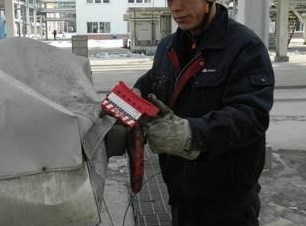Standards by country
United States
Lockout–tagout in the US, has five required components to be fully compliant with OSHA law. The five components are:
Lockout–Tagout Procedures (documentation)
Lockout–Tagout Training (for authorized employees and affected employees)
Lockout–Tagout Policy (often referred to as a program)
Lockout–Tagout Devices and Locks
Lockout–Tagout Auditing – Every 12 months, every procedure must be reviewed as well as a review of authorized employees
In industry this is an Occupational Safety and Health Administration (OSHA) standard, as well as for electrical NFPA 70E. OSHA’s standard on the Control of Hazardous Energy (Lockout-Tagout), found in 29 CFR 1910.147, spells out the steps employers must take to prevent accidents associated with hazardous energy. The standard addresses practices and procedures necessary to disable machinery and prevent the release of potentially hazardous energy while maintenance or servicing activities are performed.
Two other OSHA standards also contain energy control provisions: 29 CFR 1910.269[5] and 29 CFR 1910.333.[6] In addition, some standards relating to specific types of machinery contain de-energization requirements such as 29 CFR 1910.179(l)(2)(i)(c)(requiring the switches to be “open and locked in the open position” before performing preventive maintenance on overhead and gantry cranes).[7] The provisions of Part 1910.147 apply in conjunction with these machine-specific standards to assure that employees will be adequately protected against hazardous energy.

Post time: Jul-06-2022






